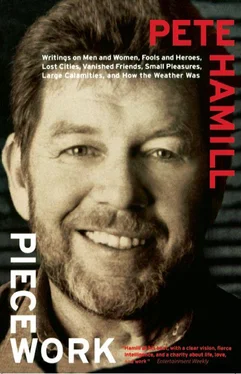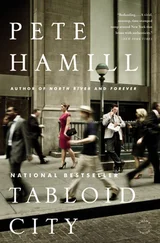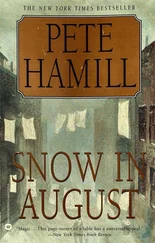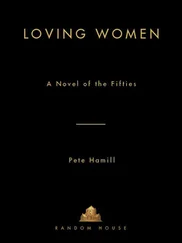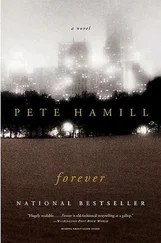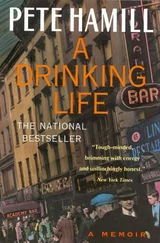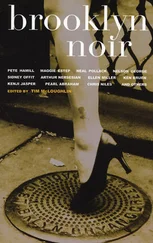Pete Hamill - Piecework
Здесь есть возможность читать онлайн «Pete Hamill - Piecework» весь текст электронной книги совершенно бесплатно (целиком полную версию без сокращений). В некоторых случаях можно слушать аудио, скачать через торрент в формате fb2 и присутствует краткое содержание. Год выпуска: 2009, ISBN: 2009, Издательство: Little, Brown and Company, Жанр: Современная проза, Публицистика, на английском языке. Описание произведения, (предисловие) а так же отзывы посетителей доступны на портале библиотеки ЛибКат.
- Название:Piecework
- Автор:
- Издательство:Little, Brown and Company
- Жанр:
- Год:2009
- ISBN:9780316082952
- Рейтинг книги:5 / 5. Голосов: 1
-
Избранное:Добавить в избранное
- Отзывы:
-
Ваша оценка:
- 100
- 1
- 2
- 3
- 4
- 5
Piecework: краткое содержание, описание и аннотация
Предлагаем к чтению аннотацию, описание, краткое содержание или предисловие (зависит от того, что написал сам автор книги «Piecework»). Если вы не нашли необходимую информацию о книге — напишите в комментариях, мы постараемся отыскать её.
offers sharp commentary on diverse subjects, such as American immigration policy toward Mexico, Mike Tyson, television, crack, Northern Ireland and Octavio Paz.
Piecework — читать онлайн бесплатно полную книгу (весь текст) целиком
Ниже представлен текст книги, разбитый по страницам. Система сохранения места последней прочитанной страницы, позволяет с удобством читать онлайн бесплатно книгу «Piecework», без необходимости каждый раз заново искать на чём Вы остановились. Поставьте закладку, и сможете в любой момент перейти на страницу, на которой закончили чтение.
Интервал:
Закладка:
“The rest has no value,” he said, his voice trembling, angry. “Only these. These I love.” He touched the books, some of them in expensive leather bindings. “But when my brother-in-law came to help me take them away, the police said he would have to pay 1000 pesos. I insisted no! I asked for a supervisor. Nothing! So I will stay here. I hope it doesn’t rain. But I’m prepared to die here before paying them anything.”
One morning I walked to Calle Versalles, where I’d lived in a friend’s apartment with my wife and daughters one winter in the ’60s. The street was blocked at both ends by rifle-toting soldiers, while rescue workers chopped at the ruins of the old Hotel Versalles. Mattresses jutted from the rubble at odd angles. Men used plastic buckets to pass along the broken brick, plaster, concrete to waiting trucks. The house where we had lived was intact, with a lone broken window on the third floor. But the Versalles, across the street, was gone, along with the building beside it and another one at the corner. I showed a New York press card to a soldier who shrugged and passed me through the lines. The smell was then richer, loamier, the sweet sickening smell of putrefaction,
Suddenly everything stopped. Workers, soldiers, firemen called for silence. A body had been found. A middle-aged woman. Her jaw was hanging loose, hair and face bone-white from broken plaster, tongue swollen, eyes like stone. Her pale blue nightgown had fallen open. A man in a yellow hardhat reached down and covered her naked breasts. Mexico.
Nothing had prepared me for Avenida Juarez. In the old days, this was one of the city’s great streets, a busy hustling thoroughfare. Turning into it from the Reforma, the Hotel Regis was on the left, along with a movie house, a pharmacy, the huge Salinas y Rocha department store. On the right was the Del Prado hotel, with one of Diego Rivera’s finest murals inside. Past the Del Prado was a mixture of shops, both elegant and tacky, silver stalls, handicraft shops, book stores, restaurants. In the distance, there was the great green space of the Alameda park, with its baroque red shoeshine stands, and the Palacio of the Bellas Artes beyond. In the 1950s, I went out with a woman named Lourdes who worked on this street, and for years afterwards I thought that one form of heaven would consist of the Avenida Juarez on a Saturday afternoon, with a new book or a newspaper in hand and a shine on my shoes and a nap in the grass of the Alameda park.
On this day, the old avenue was a shambles. It was as if some brutal general, bored with the tedium of a firefight, had called in an airstrike. The Salinas y Rocha store was now a giant shell, blackened by fire. Across the street, the Del Prado was closed (a Mexican reporter told me the Rivera mural was intact) and so were all the shops and restaurants. Three huge buildings leaned at a precarious angle. The street was packed with soldiers, sailors, doctors, nurses, reporters, and all attention was on the Regis.
The old hotel lay in a huge jagged mound; all 367 rooms had been destroyed. And I thought about the novel of Mexico City written by Carlos Fuentes in the 1950s, called (in English) Where the Air Is Clear. This was another city when he wrote his book, but Fuentes had premonitions of its ferocious future. One of his major characters was a revolutionary gone bad, an industrialist named Federico Robles.
But not he, he moved straight toward
what he saw coming: business.
the spot which will remain the center of style and wealth
in the capital: the ‘Don Quixote’ cabaret of the Hotel Regis…
They were still at the Hotel Regis when I was there in the ’50s, the models for Federico Robles eating with Fuentes’s other great character, Artemio Cruz, laughing and drinking with all the other “robolutionaries” who came to power with President Miguel Alemán in ’46. They sat in booths or at small dark tables, heavy-lidded men dressed in silk suits and English shoes, graduated at last from tequila and mezcal and pulque to good Scotch whiskey, while their chauffeurs parked outside and the blond girls waited in the casas chicas on Rio Tiber. They were the men who made the present horror: the choked decaying capital, the failing banks, the greedy cement companies, the porous hotels. They invented Acapulco (with Aleman their leader), added Zihuatenejo, Cancun, Ixtapa, providing oil and shelter for the pampered bodies of the north. They were men who were all appetite. They ate the forests, they swallowed the rivers, they sucked up water from beneath the surface of the city and the regurgitated cement. In the end, under presidents Echeverría and Lopez Portillo, they ate Mexico.
But even in the ’50s, when they still could be seen at the Hotel Regis, there were some who sensed what was coming. In Fuentes’s novel, a journalist named Ixca Cienfuegos says:
“There’s nothing indispensable in Mexico, Rodrigo. Sooner or later, a secret, anonymous force inundates it and transforms it all. It’s a force that’s older than all memory, as reduced and concentrated as a grain of powder; it’s the origin. All the rest is a masquerade. …”
In a way, that secret anonymous force arrived at 7:19 on the morning of September 19, fierce and primeval. And now the Regis, along with so much else, was destroyed. Most of the men from the Don Quixote bar are gone too, dead and buried, the profits of old crimes passed on to their children; they stand now only as examples to the hard new hustlers of Mexico. There will never be statues of these men on the Paseo de la Reforma, but there are monuments to them all over the city: mounds of broken concrete and plaster, common graves in Tezonco.
And while many of the dead remained unburied in the week after the earthquakes, jammed among the slabs of the fallen buildings, everyone talked about the future. Mexico will never be the same again: the phrase was repeated over and over again in the newspapers. There were calls from the left and right for investigation of the corruption that led to the faulty construction of so many new buildings; there were demands that Mexico decentralize the government, sending many ministries to other cities; there were suggestions that the ruined sites be converted into parks, to allow some green open spaces for Mexico City to cleanse its lungs. Some insisted that Mexico would have to postpone its payments on foreign debt until after reconstruction.
And there were a few published reminders of another earthquake, far to the south, that had led to the eventual overthrow of the Somoza regime in Nicaragua. That 1972 earthquake killed thousands too. And when the generosity of the world sent money, supplies, medicine, clothes to Managua, Somoza and his gang stole it. The great fear of some Mexicans is that the same massive robbery will happen here, that the endemic, systemic corruption will absorb most, if not all, of the money that should be spent on the people of Tepito and Colonia Roma, on the survivors of Tlatelolco and the Juarez housing project and all the other ruined places of the city. If that happens, Mexico will not require agents of the Evil Empire to provoke the long-feared all-consuming revolution.
VILLAGE VOICE,
October 8, 1985
UNDER LOWRY’S VOLCANO
The novel can be read simply as a story which you can skip if you want. It can be read as a story you will get more out of if you don’t skip. It can be regarded as a kind of symphony, or in another way as a kind of opera — or even a horse opera. It is hot music, a poem, a song, a tragedy, a comedy, a farce, and so forth. It is superficial, profound, entertaining, and boring, according to taste. It is a prophecy, a political warning, a cryptogram, a preposterous movie.
Интервал:
Закладка:
Похожие книги на «Piecework»
Представляем Вашему вниманию похожие книги на «Piecework» списком для выбора. Мы отобрали схожую по названию и смыслу литературу в надежде предоставить читателям больше вариантов отыскать новые, интересные, ещё непрочитанные произведения.
Обсуждение, отзывы о книге «Piecework» и просто собственные мнения читателей. Оставьте ваши комментарии, напишите, что Вы думаете о произведении, его смысле или главных героях. Укажите что конкретно понравилось, а что нет, и почему Вы так считаете.
